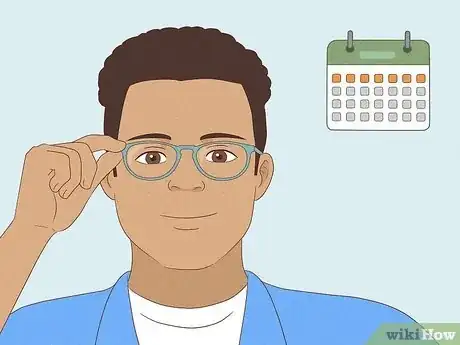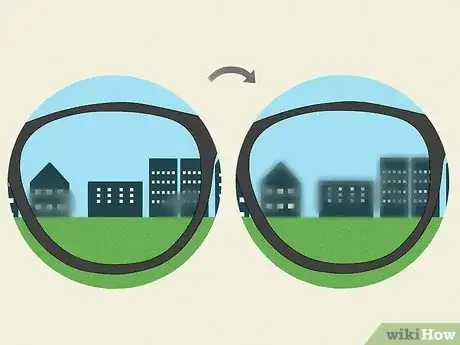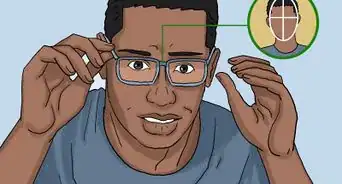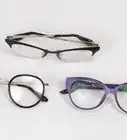This article was co-authored by Kerry Assil, MD and by wikiHow staff writer, Hunter Rising. Dr. Kerry Assil is a board certified Ophthalmologist and the Medical Director and CEO of Assil Eye Institute (AEI), an ophthalmology practice in Los Angeles, California. With over 25 years of experience and as one of the world's foremost experts in eye surgery, Dr. Assil has trained 14,000+ physicians in refractive and cataract surgery, performed 70,000+ eye surgeries, and authored over 100 textbooks, chapters, and articles on refractive and cataract surgery. He's served as the Distinguished Professor lecturer at Harvard, Johns Hopkins, Duke, Baylor, Tokyo, and UCLA among others. He has served on the advisory boards of 20+ ophthalmic device, pharmaceutical, and scientific companies and has appeared in the media as an authority on advances in vision-restoring surgeries and refractive surgery. Dr. Assil continues to make significant advances in his field with numerous inventions and introductions of state-of-the-art technologies.
There are 12 references cited in this article, which can be found at the bottom of the page.
This article has been viewed 2,370 times.
You just get new glasses, but why do your progressive lenses look blurry? Since multiple prescription strengths fit on the same lenses, you may not be used to some of your vision looking out of focus. It can take a little bit to get used to progressive lenses, but there are some easy issues to look for if you’re still having trouble seeing. Keep reading, we’ll let you know how to wear progressive lenses and what you can do to make your vision stay clear.
Things You Should Know
- Progressive lenses are correct if you can clearly see distant objects through the tops of the lenses and nearby objects through the bottoms.
- Set your frames lower if your distance vision looks blurry when you look straight ahead. Adjust the frames higher if your near vision is cloudy when you look down.
- Turn your head to look at something instead of moving your eyes to avoid blurry vision.
- Wear your glasses all day for 1–2 weeks so your vision adjusts to new progressive lenses.
Steps
References
- ↑ https://youtu.be/8N5DHYWVDJM?t=65
- ↑ https://img1.wsimg.com/blobby/go/ea9bf3ab-68c0-4613-833b-514f387880d6/downloads/pals.pdf?ver=1618259558551
- ↑ https://youtu.be/FBJKirbCA2I?t=117
- ↑ https://www.researchgate.net/publication/224529424_Adaptation_to_Progressive_Lenses_by_Presbyopes
- ↑ http://opticampus.opti.vision/files/progressive_lens_dispensing.pdf
- ↑ https://youtu.be/8N5DHYWVDJM?t=150
- ↑ https://www.essilorpro.com/content/dam/essilor-pro/product-resources/varilux/LVAR201326_Varilux_Fitting_N_Dispensing_Guide_LR.pdf
- ↑ https://www.essilorpro.com/content/dam/essilor-pro/product-resources/varilux/LVAR201326_Varilux_Fitting_N_Dispensing_Guide_LR.pdf
- ↑ http://opticampus.opti.vision/files/progressive_lens_dispensing.pdf
- ↑ http://opticampus.opti.vision/files/progressive_lens_dispensing.pdf
- ↑ https://opticianworks.com/wp-content/uploads/2020/12/Progressive_Troubleshooting_Guide_113020.pdf
- ↑ https://www.essilorpro.com/content/dam/essilor-pro/product-resources/varilux/LVAR201326_Varilux_Fitting_N_Dispensing_Guide_LR.pdf
- ↑ https://youtu.be/FBJKirbCA2I?t=370
- ↑ https://www.coavision.org/files/315-%20DYNAMITE%20DISPENSING.pdf































































